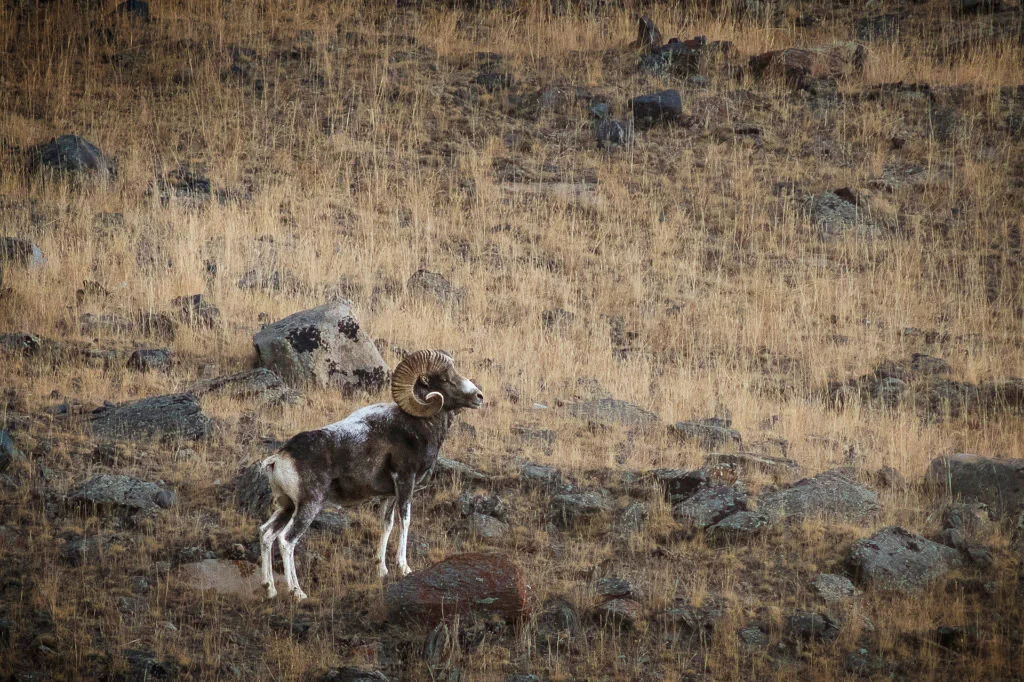





Research Overview
Wildlife Research
The Mongolian Altai provides habitat to species of global importance, including snow leopards, argali mountain sheep, wolverine, Altai snow cock, lynx, Pallas’ cat, and other rare and disappearing species. To develop appropriate management plans reliable information is necessary. The Altai Institute supports basic research of key species for science and applied conservation.
Research Overview
Wildlife Research
The Mongolian Altai provides habitat to species of global importance, including snow leopards, argali mountain sheep, wolverine, Altai snow cock, lynx, Pallas’ cat, and other rare and disappearing species. To develop appropriate management plans reliable information is necessary. The Altai Institute supports basic research of key species for science and applied conservation.

Argali
ARGALI
Argali
ARGALI
Collaring an Argali
Argali (Ovis ammon) are the largest of the world’s sheep, weighing in between 60 and 185 kg. The North American bighorn sheep may approach comparable weights but is normally considerably outsized by the argali. Argali are considered an endangered or threatened species throughout their entire range, due largely to habitat loss from overgrazing of domestic sheep and from hunting since they carry the largest horn spread of any wild sheep. Desert populations of argali have been studied for over a decade in Mongolia, but until recently, beyond scattered surveys, mountain populations have been ignored.
Perhaps the largest remaining population of Altai argali in western Mongolia is found in the Kokh Serkh Special Protected Area (KSSPA). Argali research began in Kokh Serkh in 2007 with the goal of understanding the biology of Mongolian argali (Ovis ammon) in the Altai Mountains. This complements long running argali research done by the Denver Zoo at Ikh Nartiin Chuluu Nature Reserve in the Gobi desert. The research also supports conservation planning at KSSPA. Argali have been captured and fitted with satellite GPS collars since 2010. Thousands of points have been collected and are being used to understand Altai argali movement, ecology, and behavior, and are helping Protected Area managers develop appropriate management policies.

Wolverine
WOLVERINE
Wolverine
WOLVERINE
The wolverine (Gulo gulo) is a powerful animal that resembles a small bear but is actually the largest member of the weasel family. Wolverines are both predators and scavengers with sharp teeth and powerful jaws enabling them to gnaw and tear through frozen meat and bones. With their thick, frost-resistant coat and large, snowshoe-like feet, wolverines are ideally adapted to live in northern environments. But these traits also make them vulnerable to climate change, especially a lack of deep snow cover for insulating dens.
We know that a population of wolverine exists in our study area from previous surveys, but understanding the population dynamics, human threat levels, and the ecology of the species in this region will be critical as wolverines begin to feel the effects of climate change due to diminishing suitable habitat. Monitoring their populations over time will help us understand climate change impacts that can be compared to populations that have been studied for a while in Scandinavia and the United States. After a halt in the wolverine program in Chigertei National Park because of the COVID pandemic, the Institute will begin capturing and collaring wolverine in March, 2023 for the first movement study of the species in the Asian part of its range.

Snow Leopard
Snow Leopard
Snow Leopard
Snow Leopard
Snow leopard hunting in Kyrgyzstan. Photo by Edward Vilchinsky, USSR, 1966
The snow leopard (Panthera uncia) is one of the most enigmatic and least understood of the big cats. Although the cats freely cross the international boundaries of 12 countries, their secretive behavior and remote habitat among the highest mountains in the world add to their mystery. Because of their shy behavior and uncanny, almost mystical ability to disappear among the rocks, snow leopards have entered the folklore of local peoples in many countries and have been described as shape-changing mountain spirits.
Mongolia has the world’s second largest population of snow leopards, after China. Although a population has been studied since the 1990’s in southern Mongolia, almost nothing is known about this elusive cat in the mountains of the Altai range, the core area of their population in Mongolia and an area of global significance for snow leopard persistence. Utilizing new techniques tailored to monitor wildlife in remote and rugged landscapes, such as remote camera traps, GPS-satellite radio collar and fecal DNA sampling, the Altai Institute is collecting a wealth of data to better understand this apex predator that provides benefits for an entire ecosystem and how best to protect it in the face of future threats in an area of global conservation concern.




